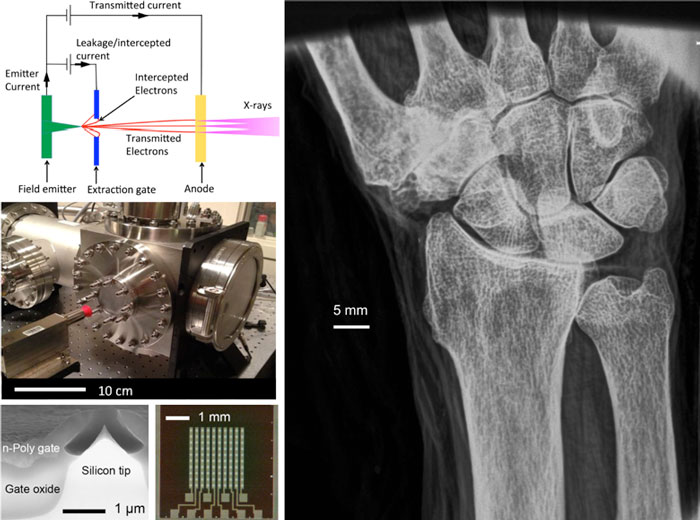Paper reports demonstration of a low-cost, micro and nanotechnology-enabled, quasi-monochromatic X-ray source to capture absorption images of low-Z material structures such as soft tissue without any contrast media.

Image courtesy of the authors.
The paper "Low-Bremsstrahlung X-Ray Source Using a Low-Voltage High-Current-Density Nanostructured Field Emission Cathode and a Transmission Anode for Markerless Soft Tissue Imaging", by S. Cheng, F. A Hill, E. V. Heubel, and L. F. Velásquez-García was selected as one of the three JMEMS RightNow Papers of the April 2015 issue of the IEEE Journal of Microelectromechanical Systems (JMEMS), arguably the top journal on the topic of MEMS/NEMS. The distinction recognizes the excellent quality of the paper, effectively ranking it in the top 10% of the papers that compose the bi-monthly issue. The recognition awards Open Access to the paper (i.e., free download of the paper from the IEEE servers) to greatly enhance the dissemination of the work into the research community. The paper can be downloaded here.
The paper reports the demonstration of a low-cost, micro and nanotechnology-enabled, quasi-monochromatic X-ray source that makes possible the capture of absorption images of low-Z material structures such as soft tissue without any contrast media. The source generates quasi-monochromatic X-ray radiation by maximizing the contribution of the characteristic X-ray fluorescence of the anode over the bremsstrahlung radiation. By carefully choosing the X-ray-generating material, the structure of the anode, and the operational voltage, the emitted radiation has high enough energy to travel through air and generate absorption images of samples, but low enough energy to generate enough contrast when interacting with soft tissue. The X-ray source prototype uses a field emission electron source composed of an array of nanosharp tips and a transmission anode coated with a microstructured Au layer that generates the X-rays. The work is of great importance to medical diagnostics, inspection of cargo, and the food industry.
--Microsystems Technology Laboratories; 6/8/2015